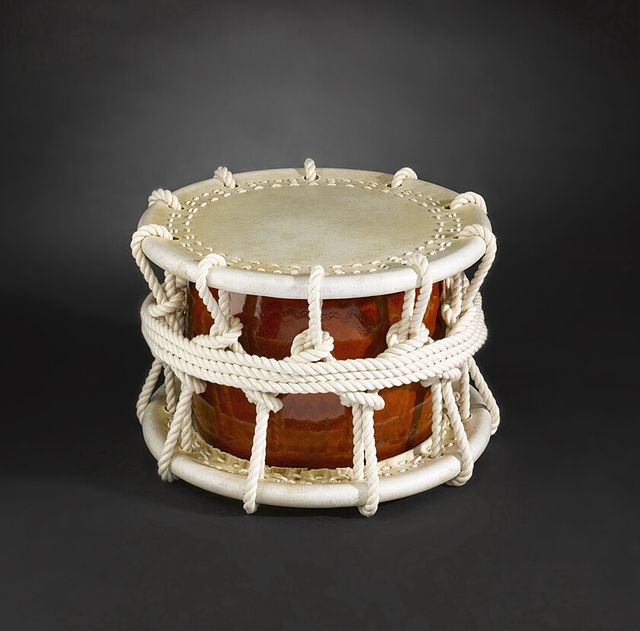Top Qs
Timeline
Chat
Perspective
Shime-daiko
Musical instrument From Wikipedia, the free encyclopedia
Remove ads
The shime-daiko (締め太鼓) is a small Japanese drum. It has a short but wide body with animal skin drumheads on both its upper and bottom sides. The hide is first stretched on metal hops, then stretched over the body. Similar to the tsuzumi and to African talking drums, both drum heads are bound together with cords so that the drum heads are bound by each other. Like the larger taiko drums, the shime-daiko is played with sticks called "bachi," while it's suspended on a stand. Being very taut, the shime-daiko has a higher pitch than that of normal taiko. Shime-daiko are used in various Japanese music ensembles, from nagauta, hayashi, taiko, to folk music, or min'yō ensembles.[1]

Shime-daiko have been used in Japanese music genre since the dengaku of the Middle Ages.[2]
Remove ads
Etymology
The word "shime-daiko" comes from a larger word "tsukeshime-daiko" (付締め太鼓) often shortened to simply, "shime-daiko" or "shime". The prefix "tsukeshime" (付締め) incorporates the verbs tsukeru (付ける, "to fasten; to attach"), and shimeru (締める, "to fasten; to tie"); the compound connotes a tight, secure fastening.
References
External links
Wikiwand - on
Seamless Wikipedia browsing. On steroids.
Remove ads
